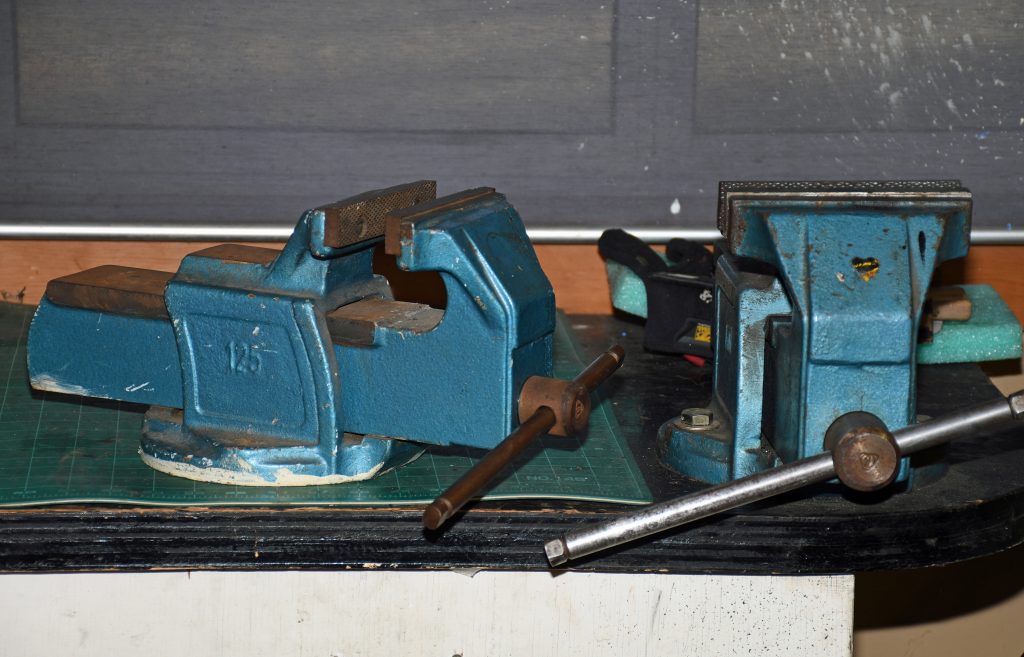
Ponder the common bench vise. Just about everyone reading this will have one or two of them in the shop or in a trailer (or even mounted on a truck bed or perhaps on a hitch receiver). They serve all sorts of duties and they can handle all sorts of tasks. They regularly get used and abused.
…And sometimes they break. There’s a reason for that. Allow me to explain:
Decades ago, my father-in-law Pete worked for a large national auto parts and tool distributor. He was their shop equipment go-to guy. And he spent most of his time on the road dealing with the installation of shop equipment and looking after service and warranty claims for various tools and pieces of equipment. One day when he wasn’t on the road, I went to visit him at the warehouse. Sitting in a corner of the shop was a small pile of Poland (now called Bison) “warranty” bench vises.
I asked what was up with that pile of vises (mostly because I had one at the time and I currently still have two of them). Pete told me they’re a great vise, but each and every one was broken because someone figured it was an anvil.
These vises (and many others) were and are constructed with a body and jaws manufactured from cast iron. Jaw inserts are regularly manufactured from induction hardened steel. The operating screw is regularly manufactured from steel. And since the bodies are built from cast iron, if you hit with a large enough hammer with sufficient force, and hit it enough times you can eventually fracture it.
Anvil Vises
That’s why some vises have an “anvil” feature. A really good example is the Palmgren Anvil Vise. The jaw width is six inches. On the end opposite the jaws, the vise is equipped with a built-in anvil that’s manufactured with a hardened face. The anvil end has a built-in horn and a step. Basically, you can beat on it much as the same as you would an anvil.
Metalworking Vises
You can get vises that swivel and you also get them with a rotating head. A good example of one that offers both of these features is the Baileigh Industrial BV-5P. The body is cast iron and it features five-inch jaws. The main body swivels 360 degrees and the vise head rotates 360 degrees. It has a 3.5-inch pipe jaw opening along with a 4.5-inch v-jaw opening. Basically, this is metalworking vise that allows you to hold material like tubing in place while you work on it.
Mechanic’s Vises
A good example of a vise for mechanics is the Wilton 28812HK. This vise is manufactured from 60,000 PSI ductile iron and it features a jaw width of 6.5 inches. The base also has a 360-degree swivel feature. What’s different here is the vise has a round precision machined slide. A thrust bearing is incorporated and that makes it easier to apply and release the clamping force. It too has an anvil feature, although unlike the Palmgren example earlier, the Wilton does not have a typical anvil horn. Instead, it has a large flat striking surface.
Woodward Fab has a very interesting forged steel vise. It’s actually manufactured in Germany by a company called Heuer. The vise has a jaw width of 4-inches. The jaws are fixed, but keep in mind they’re surface hardened forged steel. The Heuer vise has what they call a “dual prism guide track.” The spindle operates on a bearing and this makes for an incredibly smooth and tough bench vise, even though it only weighs in at nine pounds or so. Additionally, the layout allows for a very slim vise body, which clearly provides more working room adjacent to the jaws.
If you need a big brute of a bench vise, consider this one from Palmgren. This vise has a jaw width of eight inches coupled with a throat depth of 4.75 inches. The body is manufactured from 65,000 PSI ductile iron while the jaws are hardened steel. The vise swivels (dual lock downs). Meanwhile the vise spindle and nut are totally enclosed in a square tube casting that protects them from dust, chips, and moisture. It also keeps them lubricated for life. That big square tube slide bar eliminates wobble when the jaws are wide open. Finally, it also has integrated pipe jaws capable of grasping tubing from 0.25 inch to 3.5 inches.
Good Ad-vise: Tips to Keep Your Vise In Good, Working Condition
No matter what vise you have or choose, be sure to treat it with respect!
Don’t hammer on it with excessive force, unless it has an “anvil” feature. Keep the slides clean and lubricate as necessary. Wipe the bench vise off after use and lightly oil the moving parts. Bottom line here is a clean, lubricated vise will work smoother and will last forever.
And if you think about it, the common bench vise just might be the most used tool in your workshop.
For a closer look at bench vises, check out the photos below.
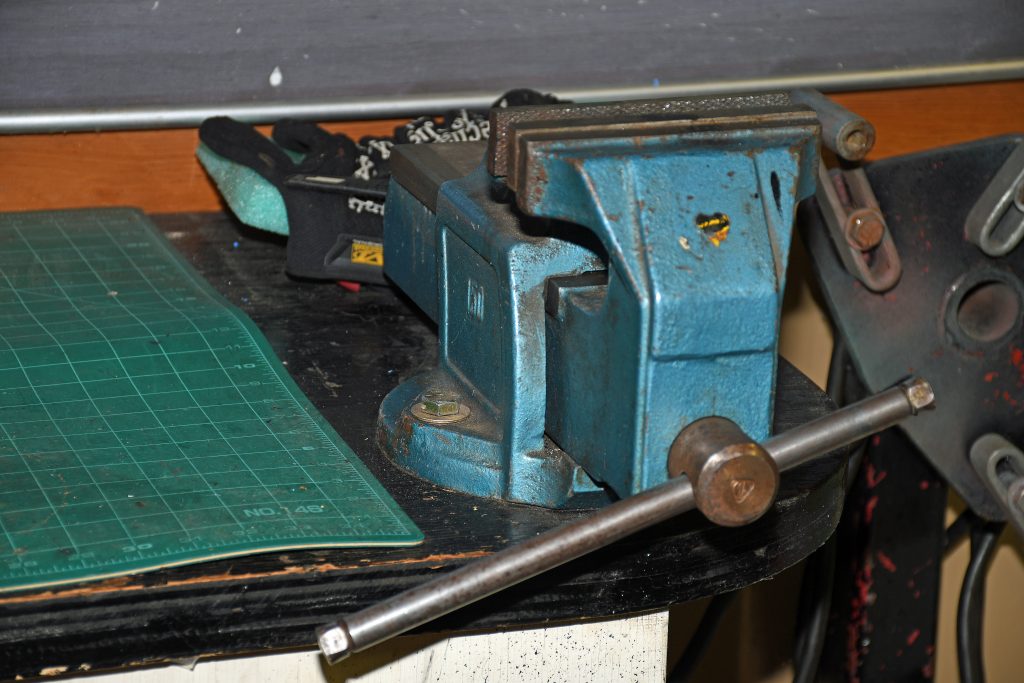
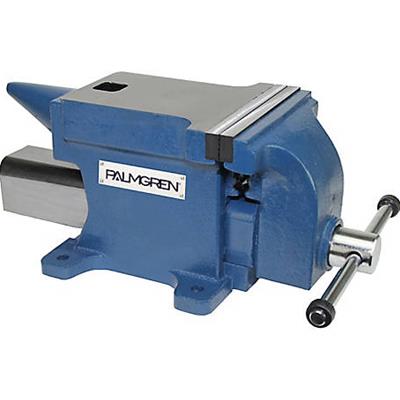
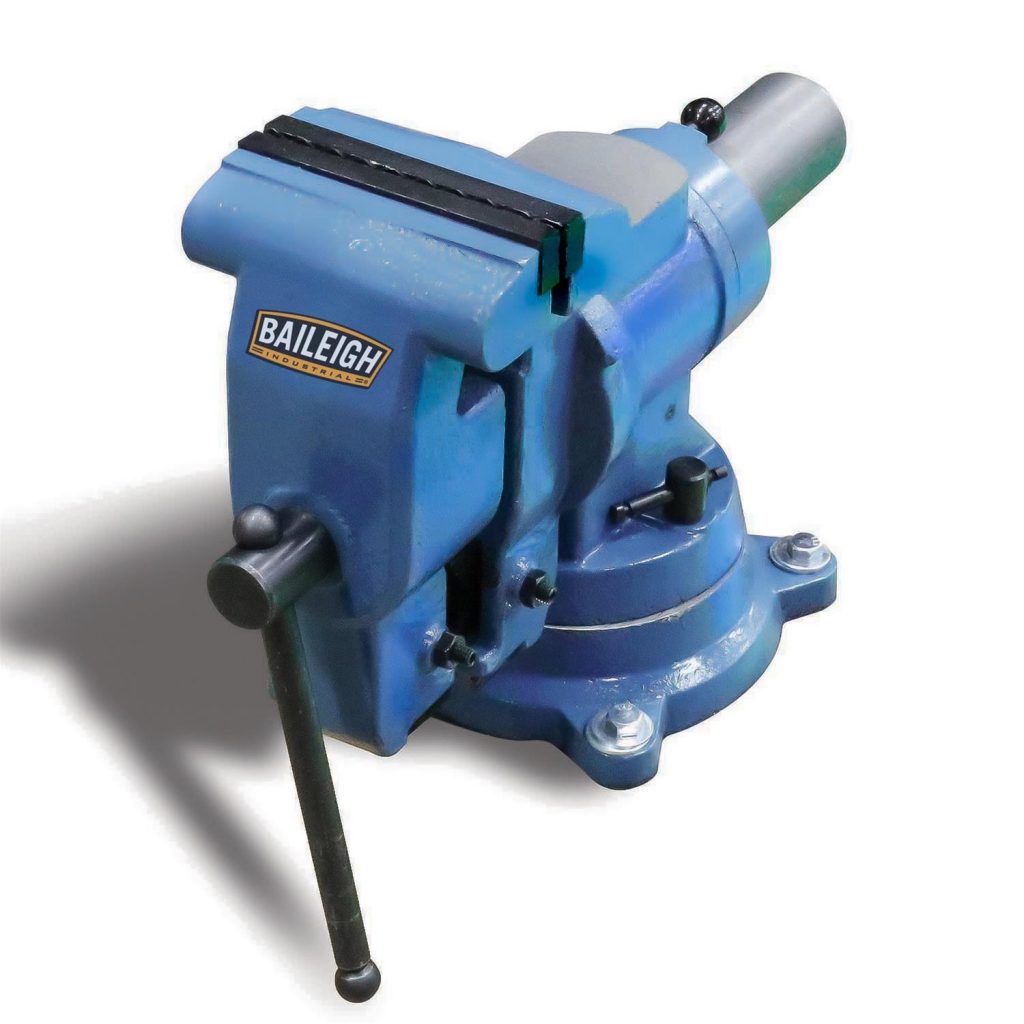
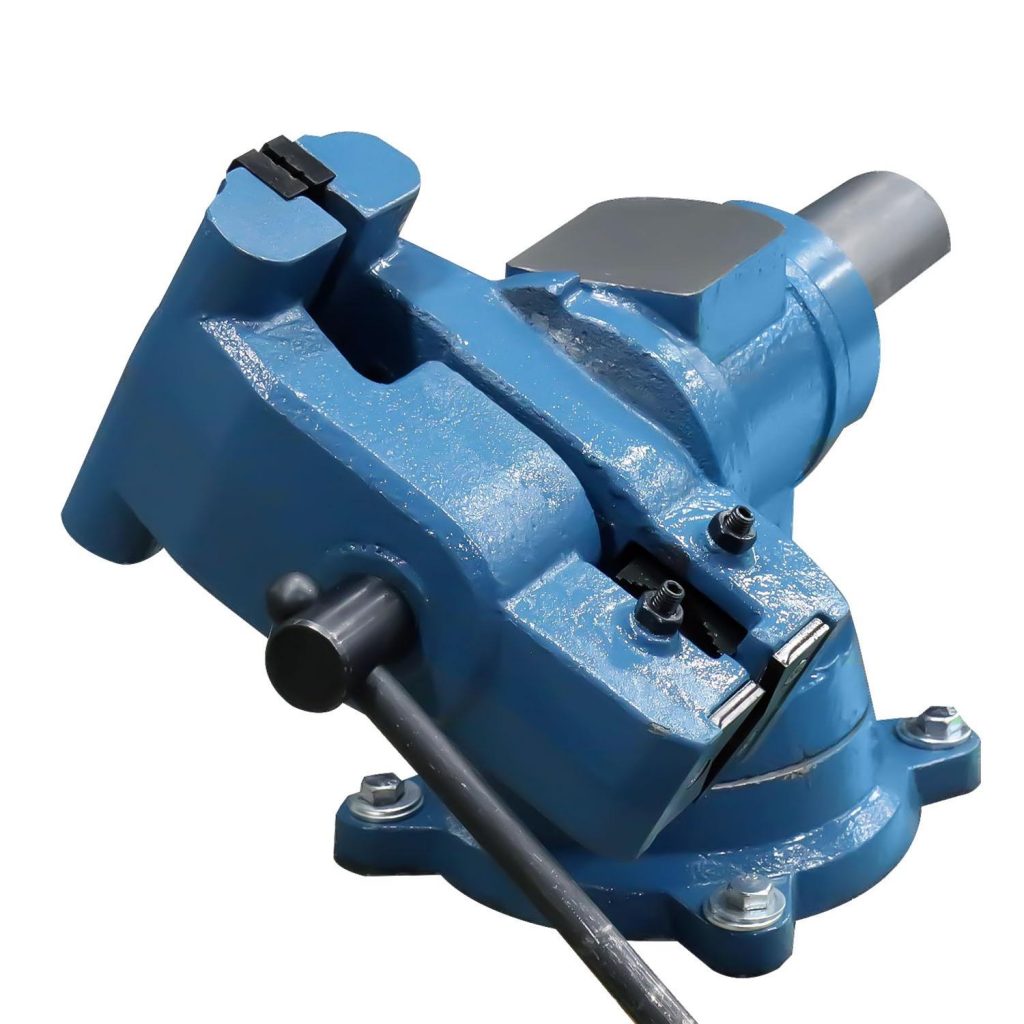
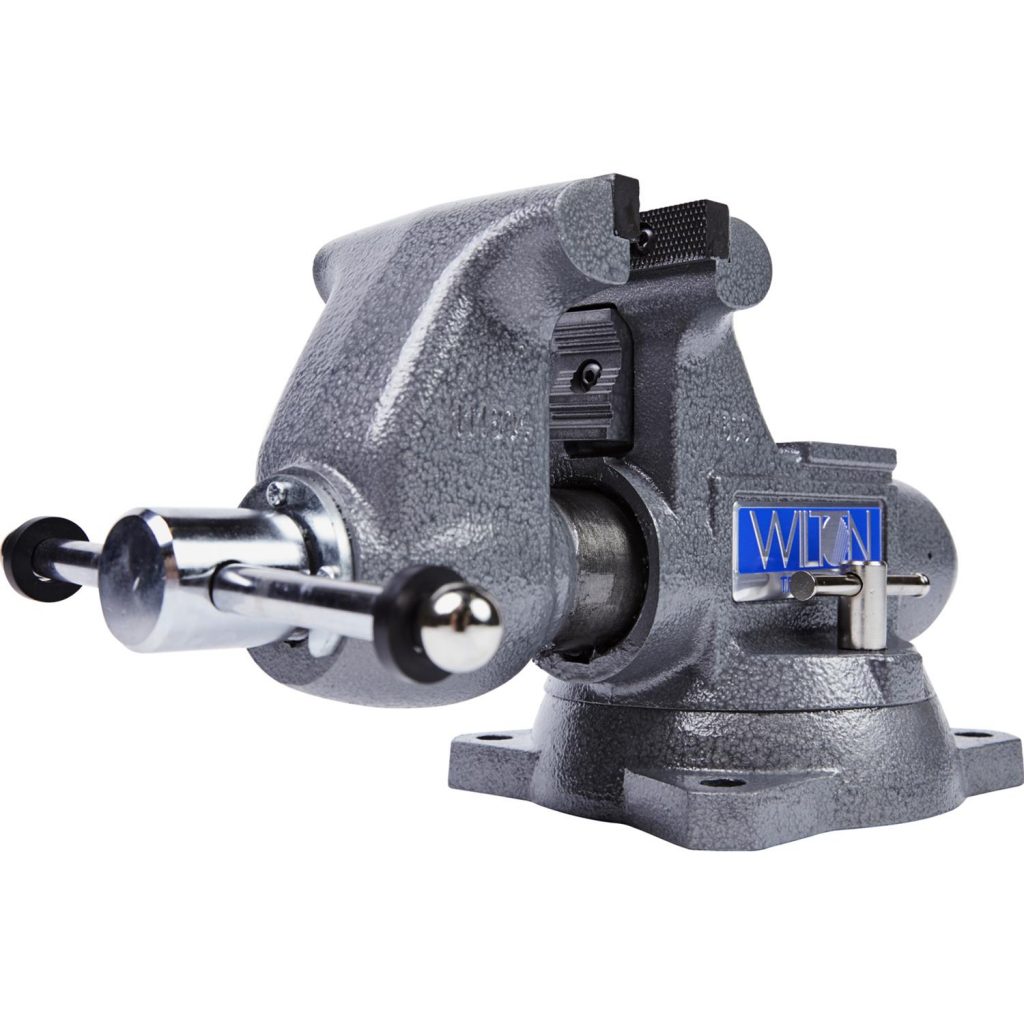
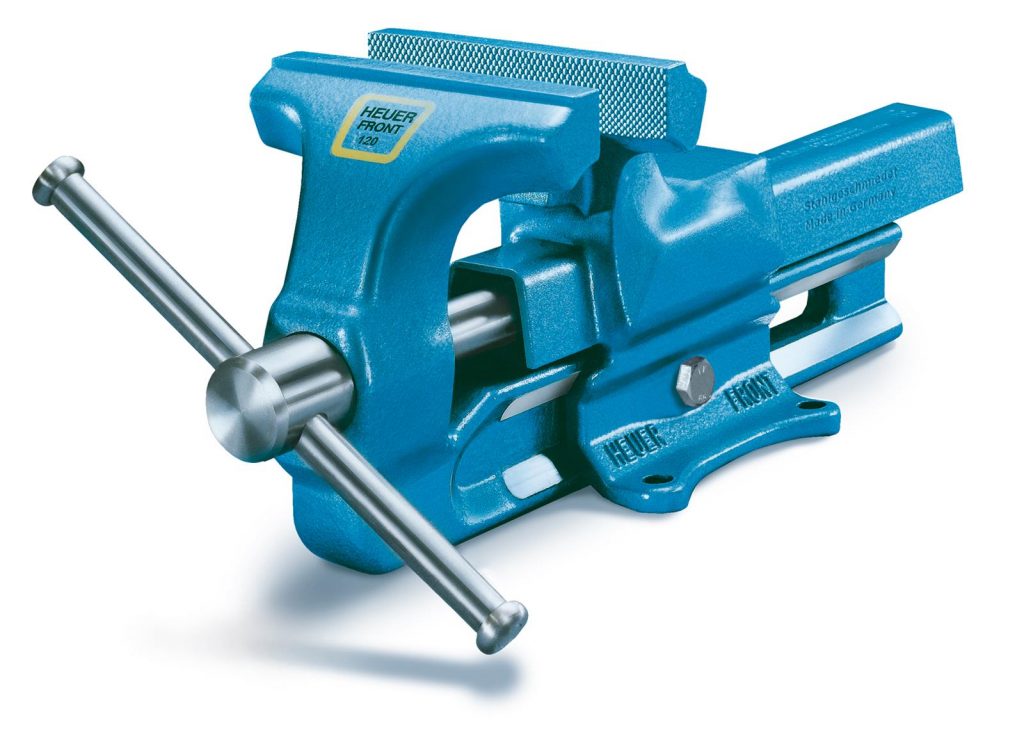
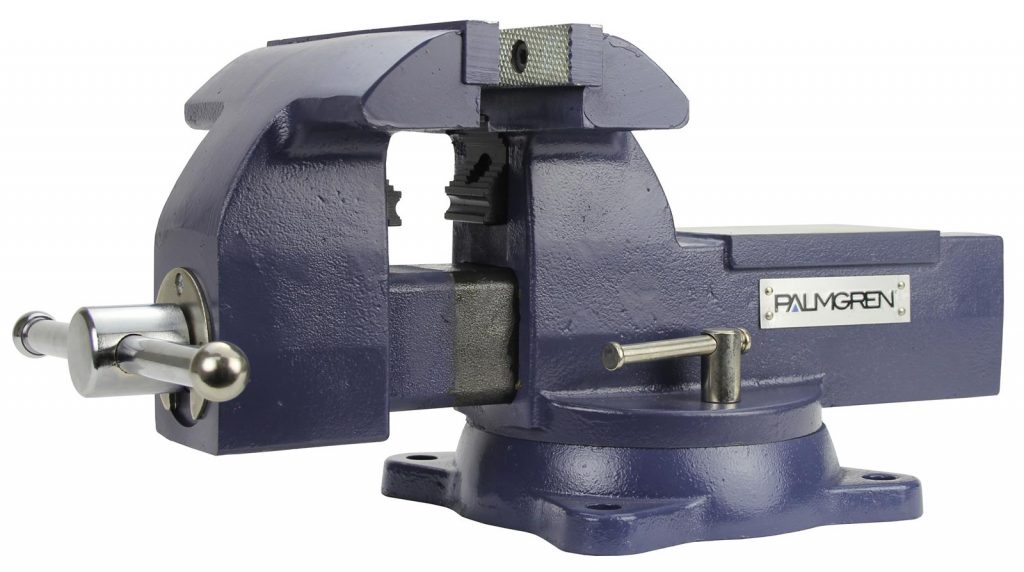


[…] Ponder the common bench vise. Just about everyone reading this will have one or two of them in the shop or in a trailer (or even mounted on a truck […] Read full article at http://www.onallcylinders.com […]
[…] you to permanently mount it to your workbench, or alternatively, mount it within the jaws of your bench vise. The handle can be moved from right to left by removing the wheel and shaft set screw, and then […]